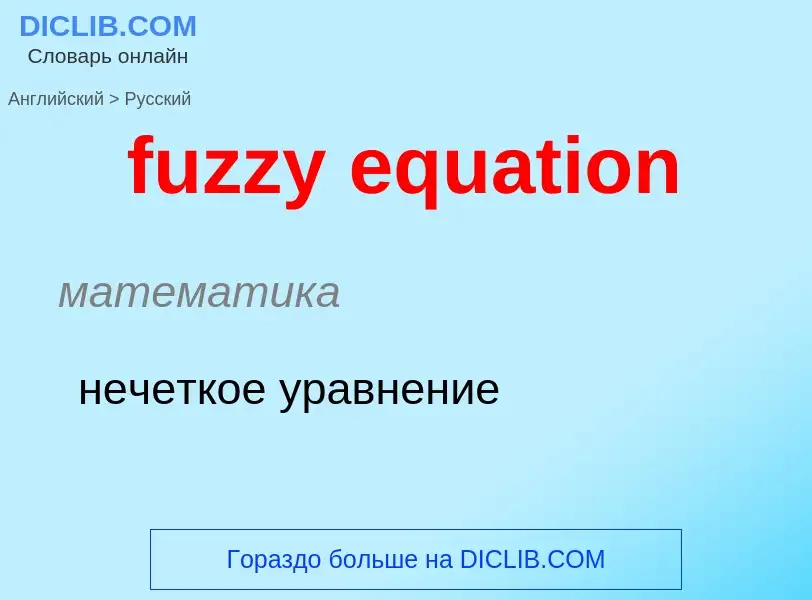Tradução e análise de palavras por inteligência artificial
Nesta página você pode obter uma análise detalhada de uma palavra ou frase, produzida usando a melhor tecnologia de inteligência artificial até o momento:
- como a palavra é usada
- frequência de uso
- é usado com mais frequência na fala oral ou escrita
- opções de tradução de palavras
- exemplos de uso (várias frases com tradução)
- etimologia
fuzzy equation - tradução para russo
математика
нечеткое уравнение
общая лексика
нечёткое множество
математика
размытое (нечеткое) множество
Смотрите также
математика
нечеткая категория
Definição
Wikipédia
In mathematics, fuzzy sets (a.k.a. uncertain sets) are sets whose elements have degrees of membership. Fuzzy sets were introduced independently by Lotfi A. Zadeh in 1965 as an extension of the classical notion of set. At the same time, Salii (1965) defined a more general kind of structure called an L-relation, which he studied in an abstract algebraic context. Fuzzy relations, which are now used throughout fuzzy mathematics and have applications in areas such as linguistics (De Cock, Bodenhofer & Kerre 2000), decision-making (Kuzmin 1982), and clustering (Bezdek 1978), are special cases of L-relations when L is the unit interval [0, 1].
In classical set theory, the membership of elements in a set is assessed in binary terms according to a bivalent condition—an element either belongs or does not belong to the set. By contrast, fuzzy set theory permits the gradual assessment of the membership of elements in a set; this is described with the aid of a membership function valued in the real unit interval [0, 1]. Fuzzy sets generalize classical sets, since the indicator functions (aka characteristic functions) of classical sets are special cases of the membership functions of fuzzy sets, if the latter only takes values 0 or 1. In fuzzy set theory, classical bivalent sets are usually called crisp sets. The fuzzy set theory can be used in a wide range of domains in which information is incomplete or imprecise, such as bioinformatics.


